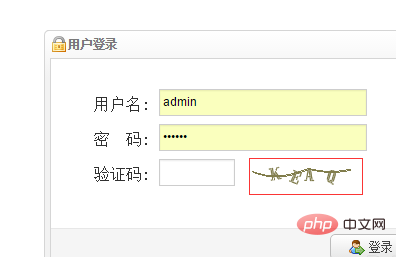

Make sure that the php environment is usable and the php file can be parsed by normal server software. You can also find php.exe or php-cgi.exe and execute it. If there is no problem with the php configuration, a popup will appear. The cmd window does not close automatically, and then a cursor keeps flashing.

Create a new phpinfo.php file under the root directory of the test website. You can refer to the picture for the file content, which is the phpinfo(); statement. Its main function is to display the configuration information of the PHP server. .
Related recommendations: "php Basic Tutorial"
Access the phpinfo.php created in the first step in the browser document. Ctrl F queries gd. If it appears, it means that the gd2 library has been loaded. If the verification code still does not appear, please continue to the next step.

Especially for utf-8 projects, many novices are accustomed to using the notepad that comes with windows to modify and save some configuration files of the website, so that the encoding of the configuration files can also be changed accordingly. The change is usually from UTF-8 without BOM to UTF-8. It can be said that Notepad and UTF-8 PHP projects are simply a nightmare, and it is also a low-level mistake that novices often make.

Use notepad or other editing software to convert the configuration file (it may also be other files, check which files have been modified by Notepad), and convert Re-modify the PHP file encoding to BOM-free UTF-8 encoding format, click Save, and you're done. It is said that those programming experts can write a system with just a notepad, so how did they solve the problem of BOM-free UTF-8 encoding format.

The above is the detailed content of How to solve the problem that PHP pseudo-static verification code is not displayed. For more information, please follow other related articles on the PHP Chinese website!